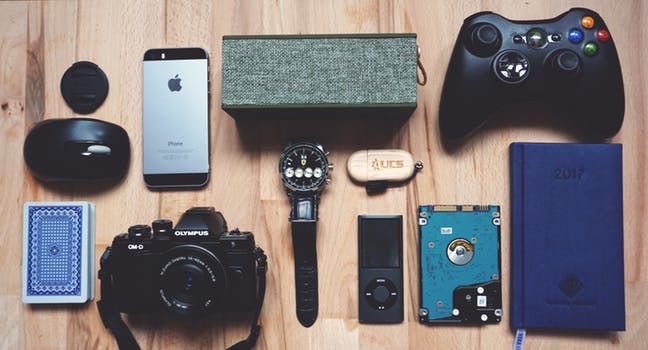TheDeveloperBlog.com
C-Sharp | Java | Python | Swift | GO | WPF | Ruby | Scala | F# | JavaScript | SQL | PHP | Angular | HTML
iOS | UiView
iOS | UiView with XCode IDE Introduction, History and Versions, Views and View Controllers, Creating the first iOS application, Label, Button, TextField, Switch, Segmented Control, iOS UI Controls, iOS UI Views, iOS UIView Controllers, Tab Bar Interface etc.
UIViewUIView can be defined as an object by using which we can create and manage the rectangular area on the screen. We can have any number of views inside a view to create a hierarchical structure of the UIViews. The UIView is managed by using the methods and properties defined in the UIView class that inherits UIKit. The declaration of UIView is given as follows. class UIView : UIKit Views are the fundamentals of iOS application development, and that's why UIView is one of the most used object in the object library. The views are the basic building block of the iOS application, which renders the content within its bounds rectangle and also handles any interaction with the content. UIViews are the fundamentals and the connection point of the iOS application with the user. There are several activities that are performed by the views in the iOS application.
Creating UIView
A View can be created programmatically by instantiating UIView class. We can pass the frame object inside the UIView constructor. In iOS application development, there are many objects like labels, text fields, etc. which directly inherits the UIView class to use the common properties and methods. let rect = CGRect(x: 10, y: 10, width: 100, height: 100) let myView = UIView(frame: rect) Example 1 In this example, we will create two UIViews programmatically and set their properties simultaneously. ViewController.swift
import UIKit
class ViewController: UIViewController {
override func viewDidLoad() {
super.viewDidLoad()
// Do any additional setup after loading the view.
let frame1 = CGRect(x: 100, y: 100, width: 200, height: 200)
let myView1 = UIView(frame: frame1)
myView1.layer.shadowColor = UIColor.black.cgColor
myView1.layer.borderColor = UIColor.black.cgColor
myView1.layer.borderWidth = 2
myView1.layer.cornerRadius = 5
myView1.layer.shadowRadius = 2
let frame2 = CGRect(x:100, y:400, width: 200, height: 200)
let myView2 = UIView(frame: frame2)
myView2.layer.shadowColor = UIColor.blue.cgColor
myView2.layer.borderColor = UIColor.blue.cgColor
myView2.layer.borderWidth = 2
myView2.layer.cornerRadius = 5
myView2.layer.shadowRadius = 2
myView2.backgroundColor = .green
myView1.backgroundColor = .red
view.addSubview(myView1)
view.addSubview(myView2)
}
}

Example 2 In this example, we will simulate the structure of the web page on the iOS application. In this type of iOS application, where we need to display separate customizations, we will use UIViews in the iOs applications. Interface builder The following image shows the interface builder (main.storyboard) developed in the project. The left pane in the window shows the hierarchy of views and labels used in the project. 
ViewController.swift In the ViewController file, we will add the behavior for the labels so that we can change the look of the UIView associated with the label.
import UIKit
class ViewController: UIViewController {
@IBOutlet weak var headerView: UIView!
@IBOutlet weak var bodyView: UIView!
@IBOutlet weak var footerView: UIView!
@IBOutlet weak var headerLbl: UILabel!
@IBOutlet weak var bodyLbl: UILabel!
@IBOutlet weak var footerLbl: UILabel!
override func viewDidLoad() {
super.viewDidLoad()
// Do any additional setup after loading the view.
let headerTapGestureRecognizer = UITapGestureRecognizer(target: self, action: #selector(headerLblTapped))
headerLbl.isUserInteractionEnabled = true
headerLbl.addGestureRecognizer(headerTapGestureRecognizer)
let bodyTapGestureRecognizer = UITapGestureRecognizer(target: self, action: #selector(bodyLblTapped))
bodyLbl.isUserInteractionEnabled = true
bodyLbl.addGestureRecognizer(bodyTapGestureRecognizer)
let footerTapGestureRecognizer = UITapGestureRecognizer(target: self, action: #selector(footerLblTapped))
footerLb
l.isUserInteractionEnabled = true
footerLbl.addGestureRecognizer(footerTapGestureRecognizer)
}
@objc func headerLblTapped(){
headerView.backgroundColor = .orange
}
@objc func bodyLblTapped(){
bodyView.backgroundColor = .green
}
@objc func footerLblTapped(){
footerView.backgroundColor = .orange
}
}
Output 
Next TopiciOS: Tableview
|
Related Links:
- iOS | Tab Bar Item
- iOS | PageViewController
- iOS | Tab Bar Controller
- iOS | Tab Bar
- iOS | Split View Controller
- iOS | UiView
- iOS | TableView

